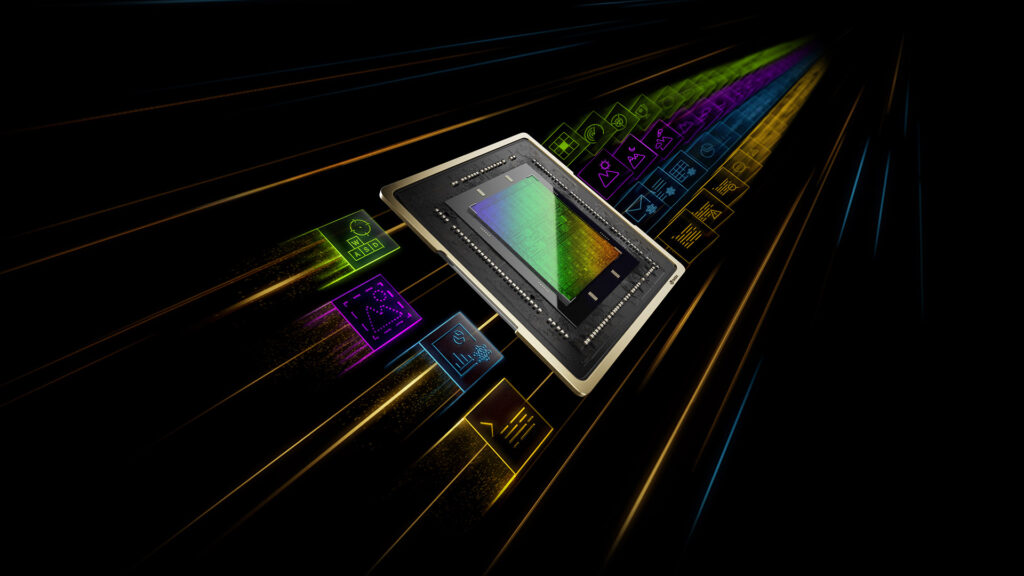Nvidia highlights scalable AI performance to stand out from mobile workstation NPUs
Nvidia has added new entry-level models to its line-up of Ada Lovelace pro laptop GPUs. The Nvidia RTX 500 and 1000 Ada Generation will be available soon in highly portable mobile workstations from Dell, HP, Lenovo and MSI. They will join the Nvidia RTX 2000, 3000, 3500, 4000 and 5000 Ada Generation laptop GPUs which launched last year.
The Nvidia RTX 500 and 1000 Ada will replace the Ampere-based RTX A500 and A1000. On paper, there’s a significant generation on generation improvement in single precision floating-point performance (TFLOPS), although the new GPUs have a higher TGP (total graphics power) so some of this may be because the GPUs can draw more power. There a much bigger leap in AI performance thanks to fourth generation Tensor cores.
Nvidia is facing increased competition from AMD and (soon) Intel who are introducing CPUs with increasingly powerful integrated GPUs that can deliver good performance for mainstream 3D CAD
What AEC Magazine thinks
AI is central to Nvidia’s messaging around the new chips. The company points out that next generation mobile workstations with Ada Generation GPUs will include both a neural processing unit (NPU), a component of the CPU [think Intel Core Ultra], and an Nvidia RTX GPU, which includes Tensor Cores for AI processing. The company states that the NPU helps offload light AI tasks, while the GPU provides additional AI performance for more demanding day-to-day AI workflows.
Nvidia claims the higher level of AI acceleration delivered by the GPU is essential for tackling a wide range of AI-based tasks, such as video conferencing with high-quality AI effects, streaming videos with AI upscaling or working faster with generative AI and content creation.
According to the company, the new Nvidia RTX 500 GPU delivers up to 14x the generative AI performance for models like Stable Diffusion, up to 3x faster photo editing with AI and up to 10x the graphics performance for 3D rendering compared with a CPU-only configuration.

What AEC Magazine thinks
It’s an interesting time for entry-level mobile workstations. Nvidia is facing increased competition from AMD and (soon) Intel who are introducing CPUs with increasingly powerful integrated GPUs that can deliver good performance for mainstream 3D CAD. It means there is less need for a discrete Nvidia GPU in certain workflows, potentially saving money and power.
For example, the AMD Ryzen Pro 7000 Series, at the heart of the HP ZBook Firefly G10 A and Lenovo ThinkPad P14s, can deliver good performance in Solidworks, Revit and other CAD/BIM tools. We expect forthcoming Intel Core Ultra laptop processors with Arc Pro graphics to offer a similar single processor value proposition.
Of course, with a discrete GPU, Nvidia can scale up performance, and not just in terms of core 3D graphics or hardware ray tracing. Nvidia’s Tensor Cores can significantly boost AI processing. At the moment, most of the benefits for AEC firms are either generic (text-to-image or background blur on video calls) or focus on photo editing or visualisation. Many viz tools include AI de-noising or Nvidia DLSS 3 which boosts 3D performance by generating additional high-quality frames.
As more AEC software firms embrace AI, applications are likely to grow, although with a growing trend for browser-based BIM tools and centralisation of data, much of this processing could be handled by GPUs in the cloud or in servers.






